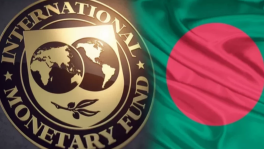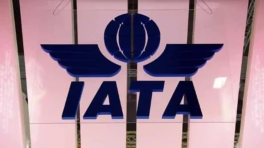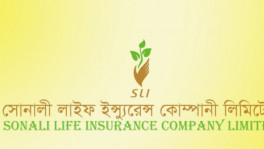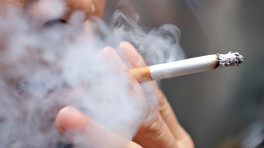A tale of asymmetric policy treatment
What accounts for the exceptional generosity and speed of delivery of subsidized credit to large garments vis-à-vis the rest of the economy? The impact on exports and the industry’s resistance to lockdowns are not consistent with the financial distress claims underpinning the expansion of special treatment

There are some noticeable asymmetries in the financial stimulus packages, both in their announced size and implementation, for large and small enterprises to deal with the impact of Covid-19.
Asymmetry of impact and policy response
As in the rest of the world, the impacts of Covid-19 on the Bangladesh economy have been deep and pervasive. Yet the design and the speed of policy response have overwhelmingly favoured exports, particularly garments. This is hard to reconcile with the observed impact on these sectors and their presumed financial capability.
Exports plummeted in March, April and May followed by recovery in June. Total exports in FY20 amounted to $33.7 billion, of which garment export was $27.9 billion. These are new lows since FY15 when exports were $31.2 billion, of which garments constituted $25.5 billion. Exports peaked at $40.5 billion in FY19 with garments fetching $34.1 billion. The damage to total exports relative to the peak was $6.9 billion and to garments $6.2 billion. Non-garment export losses were spread across frozen food, leather, home textiles, engineering, agricultural and chemical products. Exports of jute goods, pharmaceutical and tea increased.
Surveys suggest more than two-third Cottage, Micro, Small and Medium Enterprises (CMSMEs) are facing existential threats to employment and livelihoods for millions. Their inventories have decayed, and equipment idled as the virus severely dampened Boishakhi and eid sales. Most CMSMEs need cash resources to replenish working capital to stay afloat and restart business as exports and consumer demand recover from their abysmal trough during March-May.
Note that about 11 million CMSME provide employment to 34 million workers, according to a study by the Bangladesh Institute of Development Studies. They produce a variety of consumer and capital goods and services. Accounting for over 25 percent of GDP, they are a critical part of the national value chain, including in Ready Made Garments (RMG).
The distress caused by the virus is not symmetric across firm size and sectors. It appears fair to assume that the balance sheet of large enterprises has withheld relatively better. Covid-19 has impacted the CMSMEs harder. Large industries presumably have stronger capacity to tide over the distress on their own relative to the CMSME entities.
The financial policy response does not synchronize with the assumed impact and resiliency. Large enterprises account for two-third of the Tk50,000 crores credit package being delivered through the banks at subsidized rates of interest. The intended subsidy on interest is 4.5 percent in case of large enterprises and 5 percent in case of small enterprises. The general idea is to finance working capital.
Implementation asymmetries deeper than design
Implementation so far has diverged from what was originally intended. Initially, garments managed to get Tk5,000 crores credit at 2 percent service charge to pay their workers. This was the first and the only support given to an industry after the onset of the pandemic from the government budget, although the default risk remains on lending banks. Subsequently the large garment enterprises obtained Tk2,500 crores from the Tk30,000 crore package at 2 percent service charge with the government paying 7 percent to compensate the full 9 percent that banks can charge. This has also been used to pay wages.
The government on July 23 instructed giving Tk3,000 crores to exporters, perceived to be mostly in garments, from the package for large enterprises at 4.5 percent interest rate (with government subsidizing 4.5 percent) as in the original design. According to a TBS report (July 24), Tk10,000 crore has so far been released from this package. In contrast, only Tk518 crore has been disbursed from the Tk20,000 crore for CMSMEs. Support to large enterprises in garments dominates overwhelmingly the support to exporters in terms of credit size as well as subsidies.
This does not correspond with the capability demonstrated by the garment industry in the recent past. They managed to pay the wage bill without any subsidies from the government in FY15, just two years after the Rana Plaza tragedy, with exports lower than in the pandemic hit FY20.
An industry always needing support
If an industry of the size and age of Bangladesh's garment industry cannot pay their wage bills for even a month without fresh subsidies, one has to wonder about the solidity of grounds the industry stands on and the economic merit of the policy regime supporting its survival.
Garments account for 84 percent of the exports. It used to be the second largest garment exporter in the world until Vietnam overtook recently. Cutting, Making and Trimming (CMT) remains the dominant mode of production with limited footprint beyond. The industry depends entirely on international brands for their sales abroad. Other than in the Export Processing Zones, it has not embraced Foreign Direct Investments (FDIs) like some of its peers in competing countries. The employment level in the industry has declined from what used to be 4.5 million with women accounting for over 60 percent to 3.3 million in 2017, of whom 46 percent were women, according to BBS Labor Force Surveys.
The garment industry has received policy support under all governments like no one else. A novel public-private partnership emerged with the government providing land to garment producers in Narayanganj and Gazipur, back-to-back LCs eliminating the need for cash for working capital and foreign exchange for imports; Special Bonded Warehouse (SBW) permitting import of fabrics and accessories in a duty free environment; customs and VAT concessions on import of machinery, raw materials, dyes and chemicals; cash incentives to deemed exporters feeding the garments; and the lowest Advance Income Tax as well as corporate income tax rates. The Bangladesh Bank on July 23, 2020 enhanced the tenure of realization of export proceeds up to 90 days for garments and textile products as additional time from the statutory period of 4 months.
Many in the development community attribute a significant part of Bangladesh's success in gender equity and industrial transformation to garment manufacturing. But even those who applaud these societal changes acknowledge that the sector's safety regulations and protections for workers have hardly ever been fully compliant, with some faring far better than most. The Rana Plaza tragedy spotlighted the unsafe conditions, shoddy oversight, and low wages, among others. The perils inherent in an industry whose growth originated from the lack of regulation, low productivity and low wages came to the fore. The legal minimum wage for garment workers is among the lowest in the world notwithstanding the increase to Tk8,000 a month in 2019 from Tk5,300 set in 2013.
Policy support protected the industry from the anti-export bias in the country's trade policies. Such a regime has not been replicated in other export sectors who cannot be blamed for feeling like being treated as stepchildren.
Alternative facts
Covid-19 has subjected the industry to the hardest test since Rana Plaza. The industry's immune system appears to be weak assuming the immunity test results are not false negatives by design or default. The industry apparently cannot withstand a significant external shock despite selling billions for more than a decade. Yet the industry was most vociferous on reopening as early as end-March notwithstanding claims that orders worth $3 billion were being cancelled.
Garment exports in June 2020 was only $159 million short of exports in June 2019. The TBS report quotes industry insiders saying apparel export orders in July have recovered to around 60 to 70 percent of previous years. A survey by the Brac University Centre for Entrepreneurship Development found that BGMEA and BKMEA member factories are operating at 70.5 percent capacity and the non-members at 59.8 percent capacity in July. Only 9 percent of the 2,334 units responding to the survey were non-operational.
According to BGMEA, their monthly salary bill is Tk4,200 crores. Thus, the amount given so far covers payrolls equivalent to 2.5 months. Yet stories of workers demonstrating against garment factory owners for not settling wage arrears continue to this day like a broken record.
What therefore accounts for the exceptional generosity and speed of delivery of subsidized credit to large garments vis-à-vis the rest of the economy? The actual and expected impact on exports and the industry's stiff resistance to lockdowns do not seem to justify the expansion of special treatment. Perhaps the sustained support that made the garment industry so huge created a permanent lifeline expectation no matter how much past infancy the industry is and the prevailing societal circumstances.
The industry takes whatever it gets. Like beauty, business ethics are in the eyes of the beholder. The buck at the end of the day stops with the policy makers. Distributive justice in taxpayer financed subsidies is a public good the policy makers oversee providing.


 Keep updated, follow The Business Standard's Google news channel
Keep updated, follow The Business Standard's Google news channel














